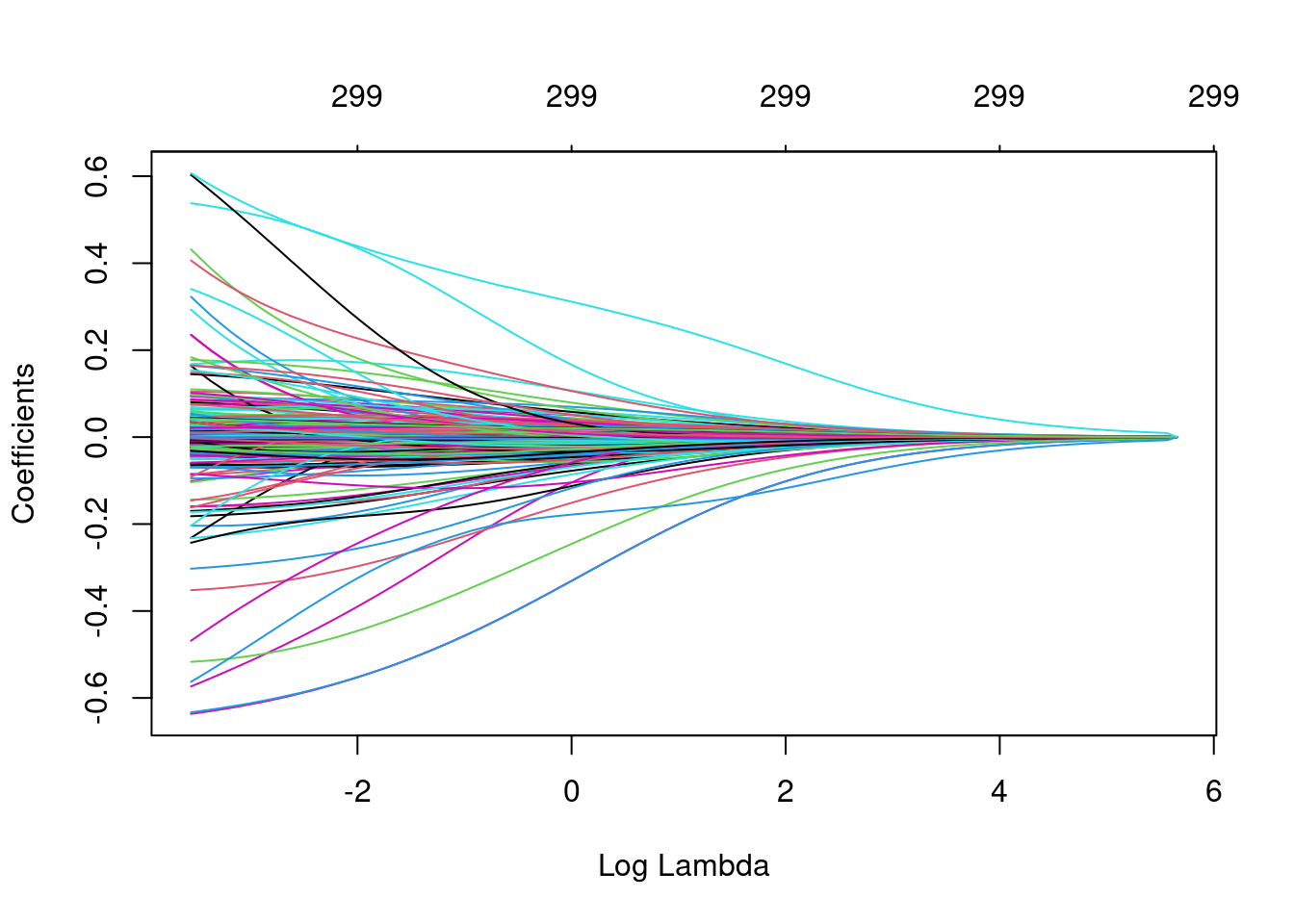6.3 - Implementation
We’ll us the glmnet package for the regularized regression models.
# Create training feature matrices
# we use model.matrix(...)[, -1] to discard the intercept
X <- model.matrix(Sale_Price ~ ., ames_train)[, -1]
# transform y with log transformation
Y <- log(ames_train$Sale_Price)To apply a regularized model we can use the glmnet::glmnet() function. The alpha parameter tells glmnet to perform a ridge (alpha = 0), lasso (alpha = 1), or elastic net (0 < alpha < 1) model.
ridge <- glmnet(
x = X,
y = Y,
alpha = 0
)
plot(ridge, xvar = "lambda")
# lambdas applied to penalty parameter
ridge$lambda %>% head()## [1] 285.7769 260.3893 237.2570 216.1798 196.9749 179.4762ridge$lambda %>% tail()## [1] 0.04550377 0.04146134 0.03777803 0.03442193 0.03136398 0.02857769# small lambda results in large coefficients
coef(ridge)[c("Latitude", "Overall_QualVery_Excellent"), 100]## Latitude Overall_QualVery_Excellent
## 0.60703722 0.09344684# large lambda results in small coefficients
coef(ridge)[c("Latitude", "Overall_QualVery_Excellent"), 1]## Latitude Overall_QualVery_Excellent
## 6.115930e-36 9.233251e-37At this point, we do not understand how much improvement we are experiencing in our loss function across various λ values.